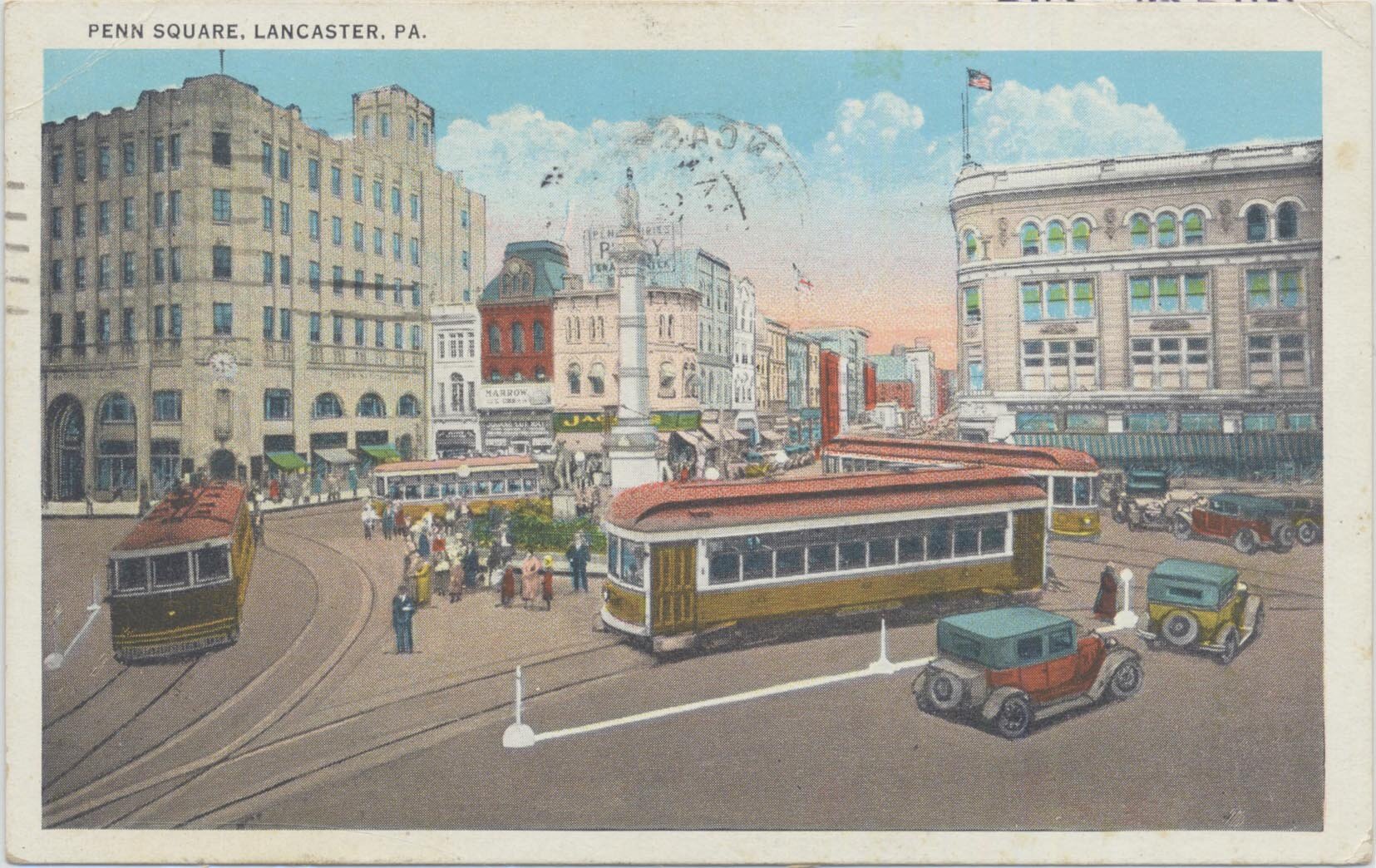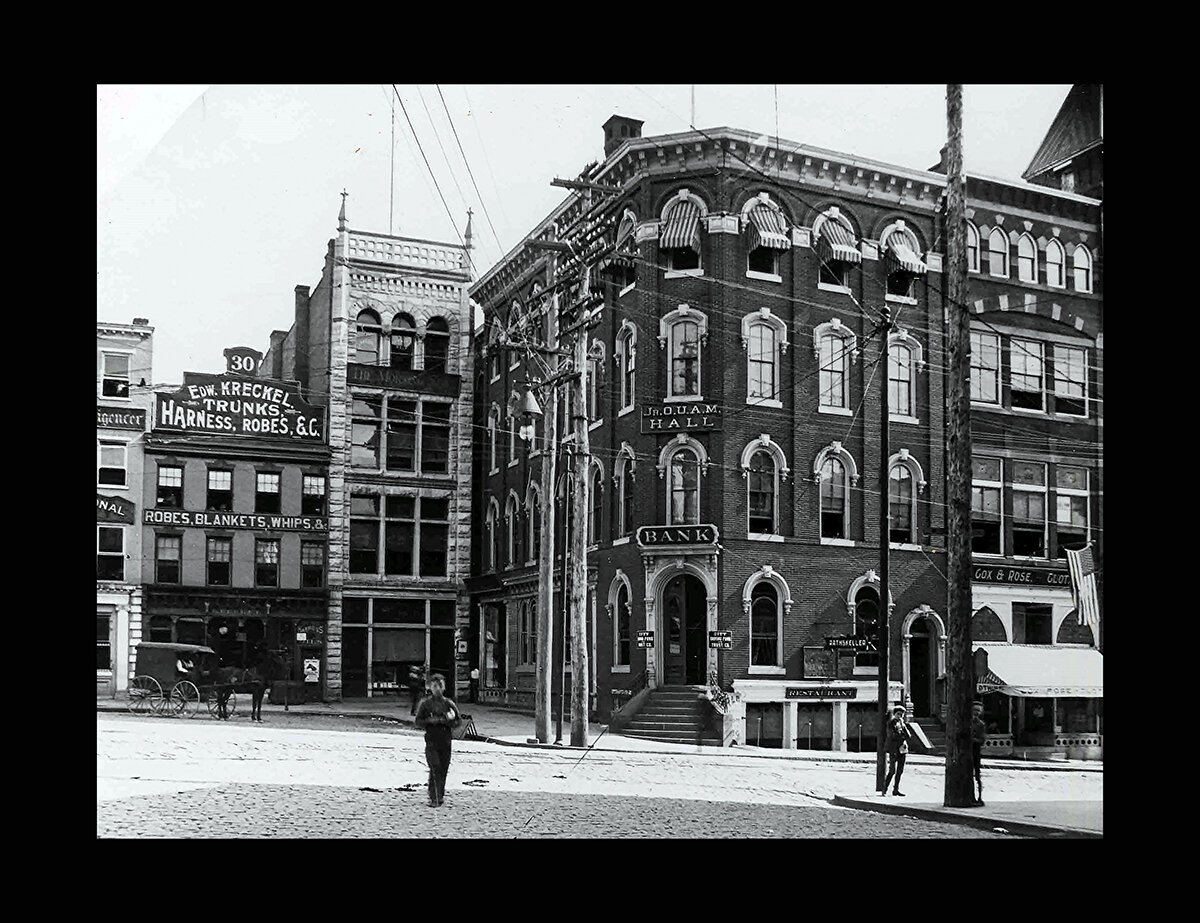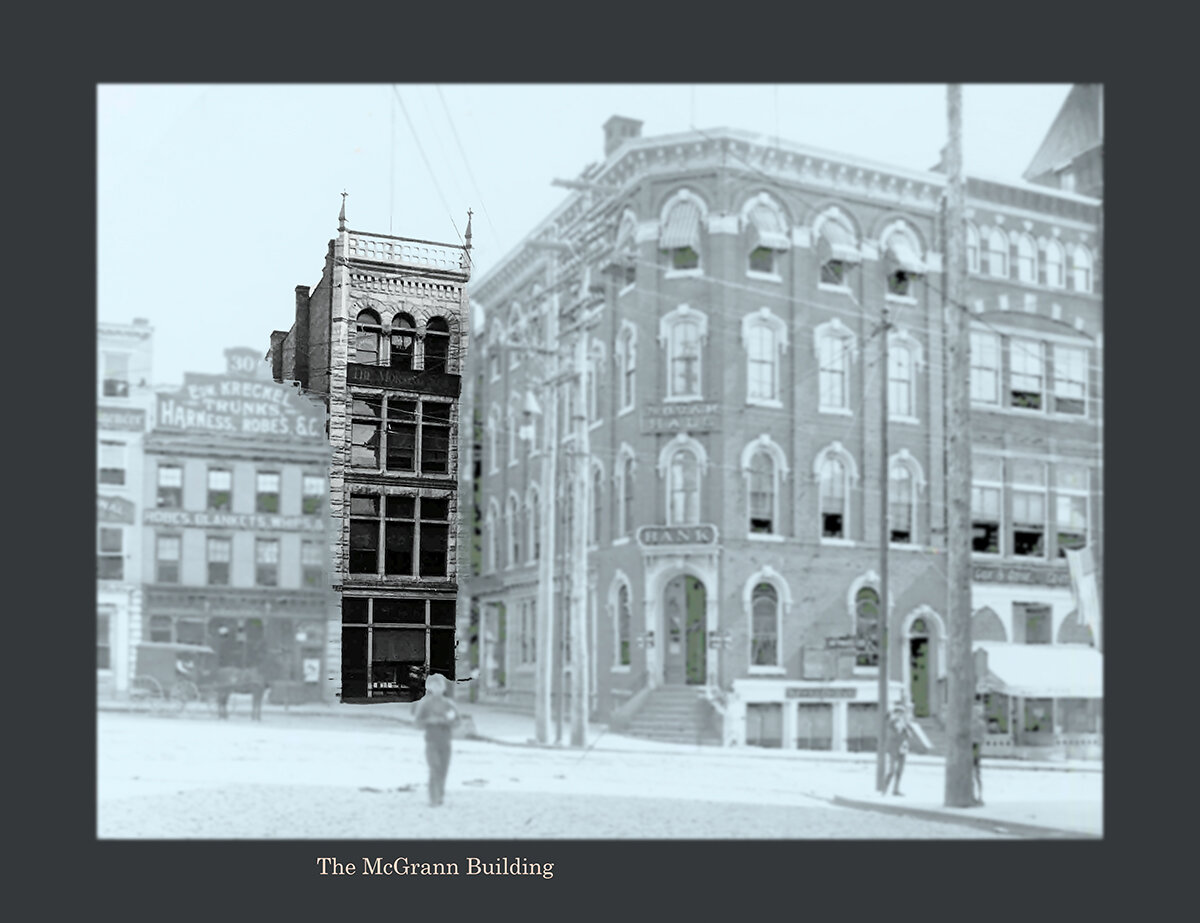Stop 4a: Penn Square
Penn Square | intersection of queen & king streets
Penn Square is the geographic center of Lancaster. From the Soldiers and Sailors Monument, the city extends 1 mile in each direction. King Street running East and West and Queen Street running North and South divide the city into quadrants.
Penn Square has changed since Demuth’s time when trolley cars ran along King Street as far as Coatesville and Downingtown. In 1900, the McGrann Building stood at 32 Penn Square, which housed the Lancaster Morning News offices and the Labor Hall.29 It was here on the first Thursday of the month that the Lancaster Camera Club met.30
The Lancaster Camera Club was organized on May 25, 1895 with the following officers:
William S. Gleim, President
William A Heitshu, Vice President
F.A. Demuth, Secretary and Treasurer
Howard Werntz, Librarian31
G. Howard Werntz was a Dealer in Photographic Supplies and Developer and Finisher for Amateurs whose shop was on the third floor at 6 E. Orange Street.32
Lancaster Camera Club, 1901, Courtesy of the Lancaster County Historical Society
The Lancaster Historical Society lists Ferdinand as an active photographer from 1894-1910, the year before his death. His obituary said “He was one of the first in this city to pursue the study of amateur photography and he had a valuable collection of views he had taken.”33 Barbara Haskell noted “[H]is interests in photography stemmed from his antiquarian and historical pursuits rather than from a keen interest in the fine arts. He specialized in images of Lancaster’s circus parades and architectural monuments.”34
Left: Ferdinand Demuth Richard W. C. Weyand collection of Charles Demuth. Yale Collection of American Literature, Beinecke Rare Book and Manuscript Library. Photographer Unknown. Right: Charles Demuth, Papa Demuth, c. 1907, watercolor on paper, 12" x 9", Demuth Museum Collection
In addition to being a photographer and businessman, Ferdinand was a member of the Lancaster Historical Society and the Empire Hook and Ladder volunteer fire company. The Empire Hook and Ladder company was organized by Charles Miller Howell, who had been active as a fireman in Philadelphia prior to moving to Lancaster. Howell was President of the Empire Hook and Ladder company from 1858-1884.35 Ferdinand took a great interest in the company and fire department matters generally, amassing the largest collection of fire hats, belts, and relics in the city at the time of his death.36
We know very little about Charles’ relationship with his father. There is only one story about the two of them that has been passed down: a story reported by Emily Farnham and Alvord Eiseman about the cause and nature of Charles’ hip infirmary. They reported that Ferdinand was tossing Charles in the air one day, either in the tobacco shop or on the stoop, and missed catching him, which resulted in a broken leg. But Barbara Haskell wrote:
“What now seems clear from extant descriptions of Demuth’s symptoms and convalescence is that he had contracted Perthes, a disease of the hip that predominately strikes boys between the ages of four and five. It leaves the child with one short leg and subject to occasional pain due to the deformation of the hip joint…Perthes was not identified until 1915, when x-rays became available for diagnostic purposes…
[M]ore important for the formation of Demuth’s personality was the fact that, in his time, the prescribed “cure” for the then mysterious disease was six weeks in traction followed by one to two years in bed. During this protracted period of incapacitation, the young Demuth was totally dependent on his mother, Augusta, for even simple acts such as bathing and relieving himself.”37
The persistence of the story about Ferdinand, retold 40 years after Charles death, indicates that at least some members of Demuth’s family (wrongly) blamed him for Charles’ lameness.
29 Lancaster City Directory. R.L.Polk: Philadelphia. 1899. P.155
30 Lancaster City Directory. R.L. Polk: Philadelphia. 1899. P.26
31 Lancaster City Directory. R.L. Polk: Philadelphia. 1897. P.28
32 Williams City Directory. J.E. Williams, Publisher: Lancaster, PA 1894
33 (Lancaster Morning Journal, Jan 27, 1911) p.5
34 (Haskell, 1987) p.14
35 (Brubaker, 2010) p.90
36 (The Lancaster Morning Journal, V.2 No.211, Friday Jan.27, 1911) p.5
37 Haskell, Barbara. Charles Demuth. Whitney Museum of American Art and Harry N. Abrams, Inc. Publishers, New York, 1987. P.12-13






